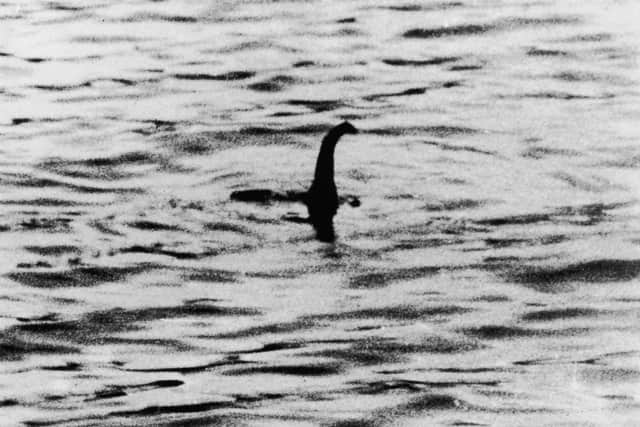The Quest: the hunt for Nessie begins as ‘The Quest’ is underway at Loch Ness this weekend - how to watch?
This article contains affiliate links. We may earn a small commission on items purchased through this article, but that does not affect our editorial judgement.
and live on Freeview channel 276
"The Quest" at Loch Ness has begun today marking a significant effort to unravel the mystery of the Loch Ness Monster, a legendary creature that has captivated imaginations for decades. With an international team of around 100 amateur sleuths and cutting-edge surveillance technology, the event aims to shed light on the existence of the elusive Nessie.
This extensive surface watch, organised by Loch Ness Centre, is reminiscent of the Loch Ness Investigation Bureau's efforts in 1972 but with unprecedented new equipment.
Advertisement
Hide AdAdvertisement
Hide AdThe Loch Ness Monster legend dates back to ancient times, with a surge of interest following reports of sightings in 1933. The event, known as "the quest," is set to be one of the largest coordinated efforts in recent history to capture the enigmatic creature on camera.
Volunteers from around the world, including places like Japan and New Zealand, will be watching live streams from the loch, with four cameras stationed along its 22-mile length. The Loch Ness Centre's Manager, Paul Nixon, anticipates that this extensive coverage could finally lead to the resolution of the mystery, albeit with questions about the nature of any potential discovery.
What distinguishes this search from past attempts is the incorporation of modern technology. The use of thermal drones, infrared cameras, and hydrophones aims to provide a more sophisticated means of detection. These tools could enhance the ability to capture any movement, offering a higher degree of accuracy and regularity compared to previous endeavours.
Once the event concludes, the collected data and findings will be meticulously analysed, offering the public a glimpse into what the extensive watch may have revealed about the elusive Loch Ness Monster.
Advertisement
Hide AdAdvertisement
Hide AdHow can I follow the search for the Loch Ness Monster at home?
You can join in “The Quest” for the Loch Ness Monster by following a live camera set up by Nessie On The Net on YouTube, which pans across most of Loch Ness.
How many “sightings” of the Loch Ness Monster have there been?
There have been a few famous and well-documented sightings of the Loch Ness Monster since the mystery of Nessie first emerged from the lochs of Scotland.
Perhaps the most iconic photograph of the Loch Ness Monster was The Surgeon's Photograph in 1934: this image depicts a long-necked creature rising out of the water. It was taken by Dr. Robert Kenneth Wilson and published in the Daily Mail. However, in the 1990s, it was revealed that the photograph was likely a hoax involving a toy submarine with a crafted model of the creature attached to it.
The Dinsdale Film, named after the person who caught the sighting on film, Tim Dinsdale, saw a large, humped creature swimming across the loch. The film gained attention and was analyzed by experts, some of whom believed it showed a living creature. However, subsequent investigations suggested the hump could have been caused by a boat wake or other natural phenomena.
Advertisement
Hide AdAdvertisement
Hide AdThe Applecross Incident in 1938 refers to claims that on the shores of Loch Ness, George Spicer and his wife Stated they saw an enormous creature with a long neck cross the road in front of their car. This sighting contributed to the popularisation of the Loch Ness Monster legend.
In 1933, Hugh Gray, a water bailiff, reportedly saw an unusual creature while riding his bike near the loch. He described a creature with a long neck and a small head moving across the road in front of him. This sighting helped spark public interest in the monster.
There was also Operation Deepscan in 1987 - this was a large-scale sonar sweep of the loch using boats with sonar equipment. The operation recorded a few sonar contacts that were interpreted as potentially large, moving objects underwater. However, the results were inconclusive and could not definitively prove the presence of a large creature.
What do people think the Loch Ness Monster could be?


Some proponents suggest that Nessie could be a surviving species of prehistoric aquatic reptile, such as a plesiosaur. Plesiosaurs were marine reptiles that lived during the Mesozoic Era, and their physical features, like long necks and flippers, are often associated with descriptions of the Loch Ness Monster.
Advertisement
Hide AdAdvertisement
Hide AdAnother theory proposes that the creature could be a giant eel or a similar aquatic animal. Eels are known to inhabit Loch Ness, and under certain conditions, they might appear larger than they actually are, contributing to sightings of a mysterious creature.
But some sightings of Nessie could be attributed to optical illusions caused by various factors, such as weather conditions, water ripples, and light reflections. These distortions might lead to misinterpretations of ordinary objects as a large, unknown creature.
Comment Guidelines
National World encourages reader discussion on our stories. User feedback, insights and back-and-forth exchanges add a rich layer of context to reporting. Please review our Community Guidelines before commenting.
